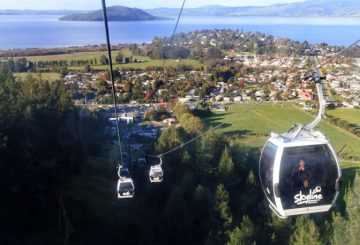Karena biaya hidup terus meningkat, kenyamanan yang diberikan hewan peliharaan seperti kucing dan kucing lebih diperlukan dari sebelumnya. Namun, merawat teman-teman berbulu ini juga ada biayanya. Dengan tagihan menumpuk, sangat penting untuk membuat setiap dolar diperhitungkan. Spesialis asuransi hewan peliharaan PD Insurance menyarankan cara pemilik hewan peliharaan dapat mengelola pengeluaran tanpa mengorbankan perawatan.
Michelle Le Long, Chief Operating Officer untuk PD Insurance, mengakui masa-masa sulit yang dihadapi banyak pemilik hewan peliharaan. Dia mencatat bahwa meskipun ada tekanan keuangan, sebagian besar pemilik hewan peliharaan menolak untuk meninggalkan hewan peliharaan mereka. Komitmen ini patut dipuji karena hewan peliharaan tidak hanya mengikat keluarga tetapi juga mengangkat anggotanya.
Untuk membantu pemilik hewan peliharaan mengelola pengeluaran mereka, Le Long menyarankan untuk meninjau semua biaya dan mencari alternatif yang lebih murah atau gratis. Salah satu cara untuk menghemat uang adalah dengan menangani perawatan, olahraga, dan ‘doggy daycare’ sendiri. Ini mungkin membutuhkan lebih banyak usaha, tetapi secara signifikan dapat mengurangi biaya.
Berinvestasi dalam peralatan perawatan dasar dapat membantu menjaga hewan peliharaan terlihat bagus tanpa perlu layanan profesional. Sumber daya online seperti YouTube dapat memberikan tutorial yang bermanfaat. Penitipan anak doggy, meskipun diperlukan untuk beberapa orang, bisa sangat mahal. Halaman Facebook komunitas dapat menjadi sumber bantuan gratis yang baik dari sesama pemilik hewan peliharaan.
Ketika datang ke mainan, hiburan, dan tempat tidur, alternatif buatan sendiri yang sederhana sudah cukup. Misalnya, mainan kucing dapat dibuat dari limbah rumah tangga seperti kertas yang dikerutkan, tutup botol, gulungan toilet, atau karton telur. Selimut tua atau linen lainnya dapat digunakan untuk tempat tidur hewan peliharaan.
Ketua Healthy Pets NZ dan dokter hewan Dr. Cath Watson menyarankan untuk berfokus pada perawatan pencegahan seperti vaksinasi, kesterilan, dan perawatan kutu dan cacing untuk menghemat biaya perawatan kesehatan. Dia juga menyarankan untuk mempertimbangkan merek makanan hewan peliharaan premium karena mereka bisa lebih hemat biaya karena bahan-bahannya yang berkualitas. Biskuit kering (kibble) bisa menjadi alternatif yang lebih murah untuk makanan basah.
Sebelum menambahkan hewan peliharaan ke keluarga, terutama selama masa-masa yang tidak pasti ini, penting untuk mempertimbangkan biaya dan harapan hidup hewan peliharaan. Mengadopsi daripada membeli hewan peliharaan juga dapat membantu menghemat uang. Mengetahui jenis hewan peliharaan sangat penting karena beberapa membutuhkan lebih banyak perawatan, kunjungan dokter hewan, dan olahraga daripada yang lain, yang dapat mempengaruhi biaya.
Terakhir, membuat ‘anggaran hewan peliharaan’ dapat memberikan gambaran yang lebih jelas tentang biaya yang terkait dengan kepemilikan hewan peliharaan dan membantu mengelola pengeluaran dengan lebih baik. Terlepas dari masa-masa sulit, penting untuk mengingat nutrisi emosional dan fisik yang diberikan hewan peliharaan kita.





























































